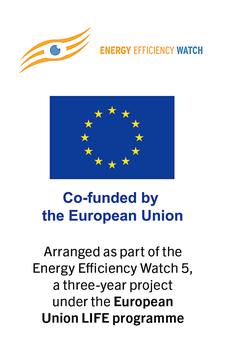Search eceee proceedings
Evaluating the Polish white certificate scheme
Panel: 1. Policies and Programmes to drive transformation
Authors:
Tadeusz Skoczkowski, Warsaw University of Technology, Poland
Jan Rosenow, The Regulatory Assistance Project (RAP), Belgium
Abstract
Poland, as the EU Member State, introduced an Energy Efficiency Obligation (EEO) in 2012 to deliver its energy efficiency targets under Article 7 of the Energy Efficiency Directive. The Polish EEO includes White Certificate trading as a key element making it one of the few EEOs in the world that include this feature. For the first time since its inception, this research provides a systematic evaluation and review of the Polish EEO.
The study has been based on a database of the 4,620 projects submitted to the EEO and statistically processed during the research. It compares the two periods of the EEO (end 2012-mid 2016 and mid 2016-present); critically reviews the principal rules of operation during the two periods; assesses the types of measures delivered in different sectors; and estimates the triggered energy savings and the costs of the EEO.
It has been found that the transition from the first to the second period of the EEO was poorly managed and happened abruptly, although several improvements have been made to the EEO that, at least to some extent, resolved some of the teething problems observed during the first period.
Several areas of concern that need to be addressed to improve the functioning of the system have been identified. Firstly, projects supported by the Polish EEO do not have to be additional to market activity that would have happened anyway even in the absence of the EEO. There is clearly a risk that the savings reported are inflated because at least some of the activity would have happened anyway. The measurement and verification regime appears to rely on self-declared energy savings by companies obtaining white certificates. There is no official specification of lifetimes. Finally, there is a lack of independent evidence-based evaluations of the EEO.
We observe several improvements through the redesign that can be expected to lead to greater energy savings going forward:
a) Reducing the complexity for market actors involved in delivering the programme makes it easier for companies to obtain white certificates and for obligated parties to deliver on their targets.
b) Disallowing projects already carried out from being funded through the EEO lowers the risk of non-additional savings and free-ridership.
c) Switching to the metric of final energy savings significantly reduces the opportunities for using renewable energy technologies for the purpose of delivering energy savings.
A positive requirement is that projects must not be doubly financed from public sources, EU or national.
The analysis shows that present levels of energy savings delivered by the EEO are insufficient to achieve the new EU energy efficiency targets for 2014–2020 and post-2020. Given the uncertainties around the savings reported and recorded by ERO the actual shortfall could be much below the 2020 saving target. This could potentially compromise the EU’s ability to meet its 2020 energy efficiency target: Poland is a major economy in the EU and has a share of over 6% of the EU’s final energy consumption. If Poland misses its Article 7 target, the implications for the EU 2020 energy efficiency target may be serious and need to be considered as a common EU threat.
Several policy recommendations for improving the EEO have been derived from an assessment of the current programme architecture. One issue currently unaddressed is energy poverty. An increasing number of EU countries now have sub-targets in their EEOs for energy poverty. Including a sub-target for energy poverty in the EEO could result in additional savings whilst also ensuring that the poorest households benefit from the EEO.
The paper has also identified a few lessons learned that are particularly applicable to countries considering the introduction or redesign of an EEO. An overall recommendation is also to increase the transparency of the EEO, making data easily accessible, and involving a wide range of stakeholders in the evaluation and delivery of the EEO.
Downloads
Download this presentation as pdf: 1-140-20_Skoczkowski_pre.pdf














